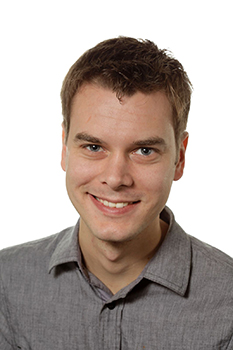Female-headed households more prone to economic strains due to rainfall variations

Martin Flatø
Photo: University of Oslo press |
Research shows that a total of 41 % of South African (SA) households are led by women, and these households are twice as likely to be poor compared to other households.
Martin Flatø spent three months at University of the Free State (UFS), researching how female-headed households in our country are affected by variations in rainfall, which cause crop failures with their implications for rural economies.
He is a PhD student from the University of Oslo in Norway who was part of the 2014/15 Southern African Young Scientists Summer Programme (SA-YSSP) that was hosted by the UFS last year.
Flatø formed part of a group of international scholars who conducted research on how families led by females are affected by climate change. The group focused on the implications of the weather on crop failures and rural economies. Gender and household structures were studied to determine ways in which they are affected by economic fluctuations.
The research group’s preliminary findings indicate that female-headed households are more vulnerable to rainfall variation than households where there are adult residents or workers of both genders.
In view of the current water shortage in the Free State, as well as scientists’ projections that our country will be among the regions hardest hit by climate change in terms of a surge in temperature, Flatø’s collaborative research has substantial relevance.|
Grooming first class scientists
The SA-YSSP is a joint initiative of South African National Research Foundation and the International Institute of Applied Systems Analysis (IIASA). Its main aim is tackling challenges faced by the world at large and South Africa in particular.
Out of 24 PhD students from 18 countries and various academic disciplines, Flatø emerged as one of only three scholars to be awarded the Systems Analysis Scholarships for his outstanding science at the end of the programme.
World class mentorship
Prof André Pelser and Dr Raya Muttarak were Flatø’s SA-YSSP supervisors. Prof Pelser, of the UFS Department of Sociology, is a leading academic on population processes, and how they relate to local environmental issues in South Africa. Dr Muttarak is a research scholar at IIASA in Austria.